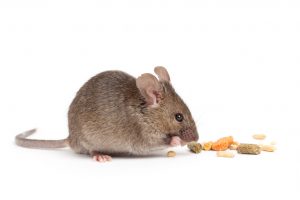Three Rodents You Are Likely To Encounter At Home
- Esther M.
- Feb-19-2021
- Pest Control
Did you know that rodents can’t vomit? There’s a barrier between the stomach and esophagus that can’t be opened by force, and they don’t have the muscle strength to open it up. How this works in favor of human beings is that when these mammals take poison, they cannot vomit it. This ends up killing them. Interesting, right?
There are many rodents in the US, but three kinds stand out: Norway rats, Mice, and Voles. In this post, you’ll learn more about each of them:
Norway rats

Did you know that rats can swim? In fact, they can stay on the water for up to three days. So even if you manage to flush them down the toilet alive, there’s still a considerable chance that they will survive. They might even try coming up the drain again. This is to say that your best option is probably to get help from an indoor pest professional. But what else is there to know about these rats?
Norway rats are incredibly adaptable creatures. They live in almost all of our planet’s land environments with the exception of deserts, tundra and polar ice. Their physical resilience and omnivorous diet help them adapt.
Despite this adaptability, Norway rats have poor vision and are colourblind. Their other senses compensate for this, however. The rodents are also adept runners, climbers, jumpers and swimmers.
Outside of built-up areas, the rodents prefer to live in fields, farmlands and other structures. The soil near riverbanks are common homes, as are piles of garbage and wood and areas close to railway embankments.
When food sources become scarce in the autumn, Norway rats are much more likely to enter homes.
Food is the reason that Norway rats often live in close proximity to humans, especially in densely-populated cities. Because they often inhabit sewer systems and invade and feast on garbage, the rodents are often seen as dirty animals. Read more from Life in Norway…
Mice

Whilst both rats and mice are known to spread rodent-borne diseases, they are also known to cause sleepless nights for homeowners. This is especially when they get into the house in parts like the attic. Despite these similarities, they are very different. A mature mouse will likely have larger ears and a tail longer than it body. This is very unlike the rat.
mice are tiny rodents with large ears relative to their smaller-sized heads. Mice have pointed noses and thin tails. Typically, they grow no larger than 7 or 8 inches. The smallest species in Maryland is also the most common—the house mouse, which ranges in size from 5 to 7 inches. Mice are burrowers, which means they like to nest in soft, quiet places where they can raise their young and store their food. Read more from Vikingpest…
Voles

Did you know a vole can give birth up to twelve times a year? And for each time, they can deliver between three to seven pups. This sounds crazy, right? But you don’t want this anywhere near your compound. It is a disaster waiting to happen.
Voles look like field mice with short tails, compact heavy bodies, small eyes, and partially hidden ears. Voles are 5 to 8 inches long and have prominent orange teeth for gnawing plant roots and stems. These opportunists will dig characteristic golf ball-sized exit holes in previously established mole tunnels. One day a plant will be beautiful, and a few days later, it will have fallen over with the roots gnawed off. There may be multiple residents in a vole colony, so habitat modification is important in controlling them. Read more from Clemson…
As a Maryland Resident, are you taking the necessary precautions to prevent a rodent infestation in your home? It’s a good idea to call in a professional to perform a routine check-up on your home. Backyard Bug Patrol is the best rodent control company in Maryland. Our professionals are here for you. Call us today!
